Creepage is the separation between two conductors as measured along the surface/layers of a board
For the most part creepage is the primary concern when it comes to "high voltage" and PCB design. It pertains to the safe distance between two conductor of differing electrical potential & the dielectric strength of the medium separating them.
For a given voltage, the distance that can safely & reliably support such a voltage is governed by
1) where in a PCB stack the traces are
2) what altitude the the card is at
For the most part the IPC2221A provides reasonable working rules for clearances.

For voltages greater than 500V, the (per volt) table values must be added to the 500V values.
For example, the electrical spacing for a Type B1 board with 600V is calculated as: 600V - 500V = 100V 0.25 mm + (100V x 0.0025 mm) = 0.50 mm clearance
External traces require larger distances due to exposure to PCB contaminants that can reduce the overall creep distance.